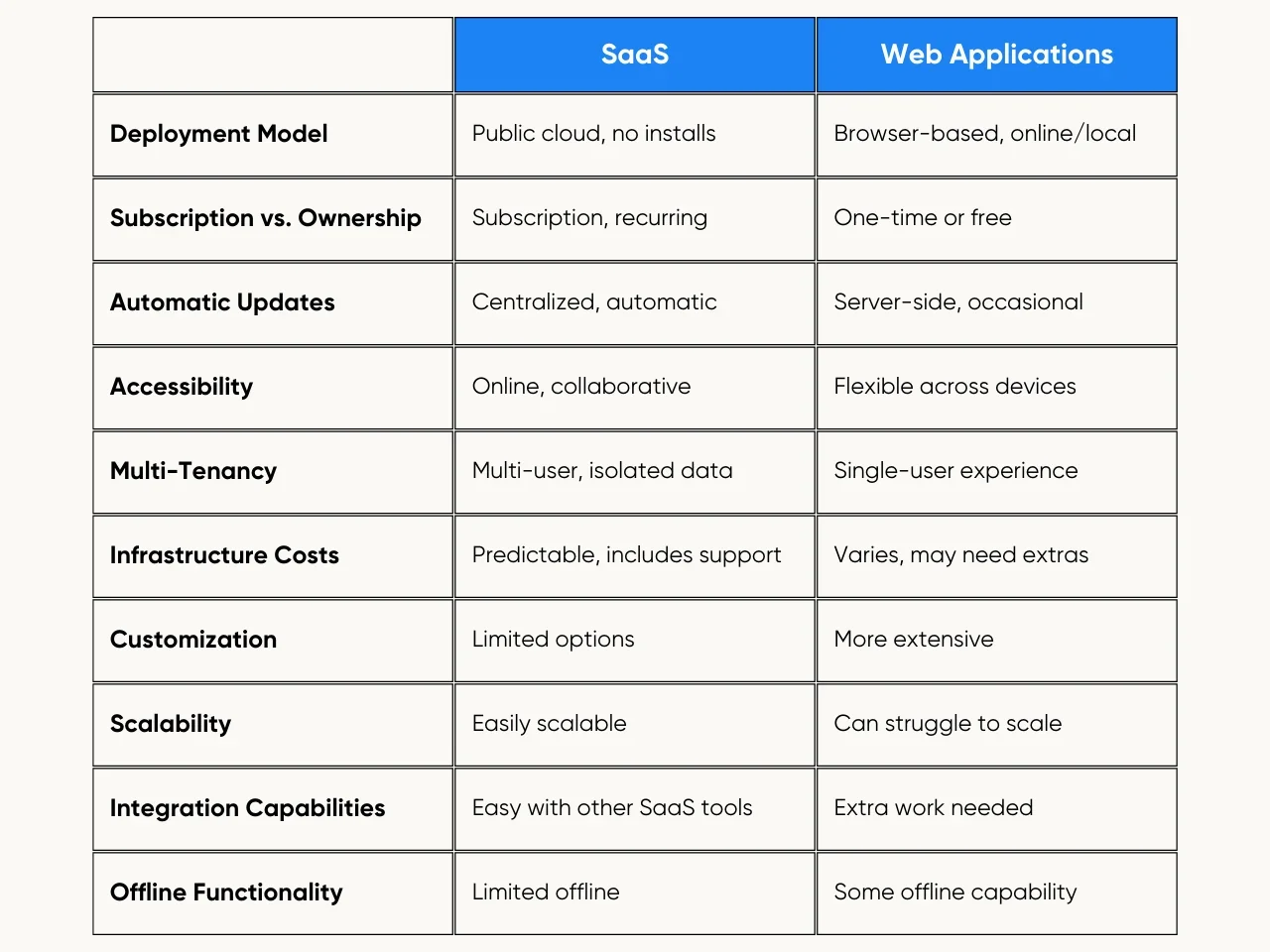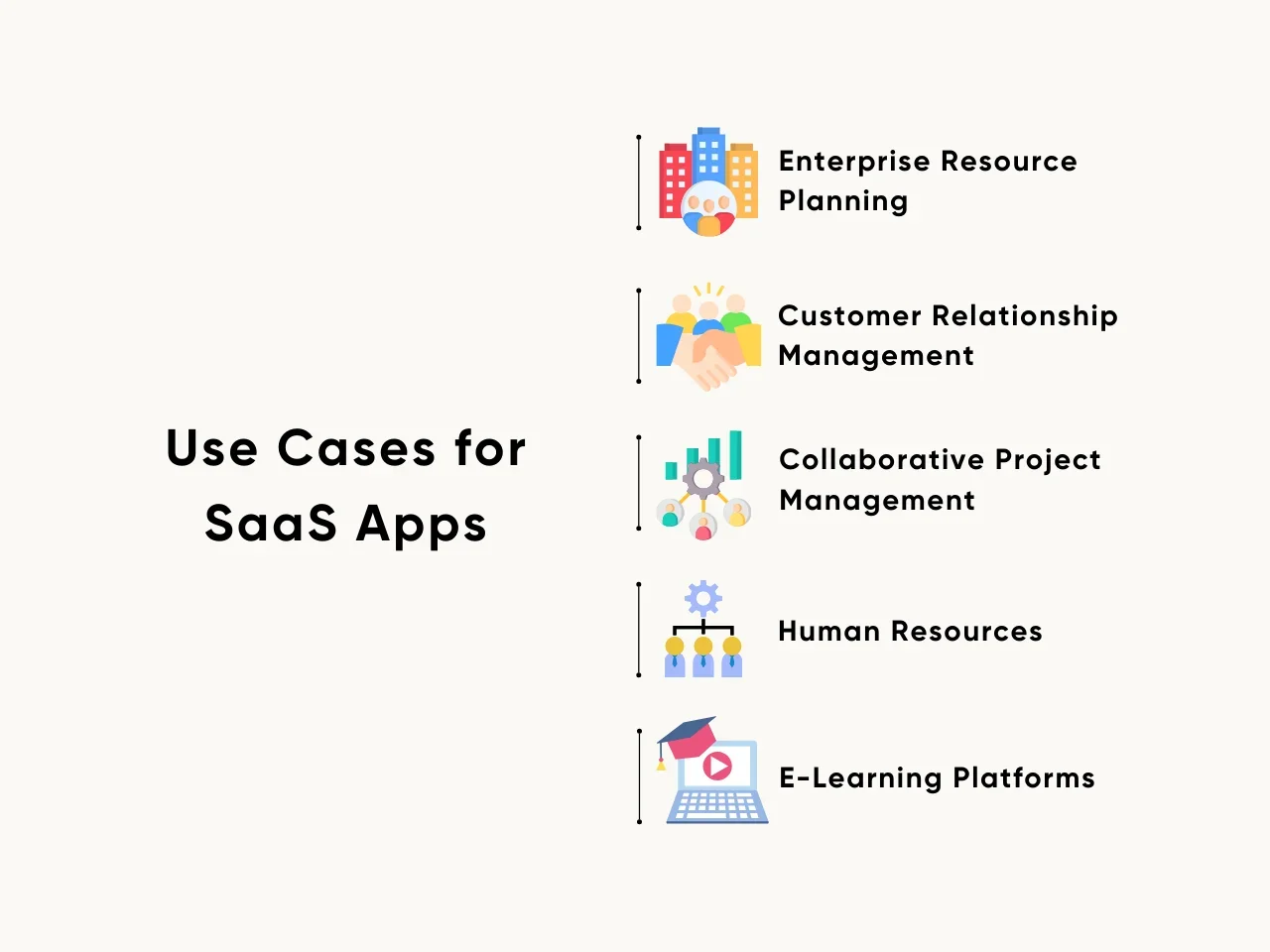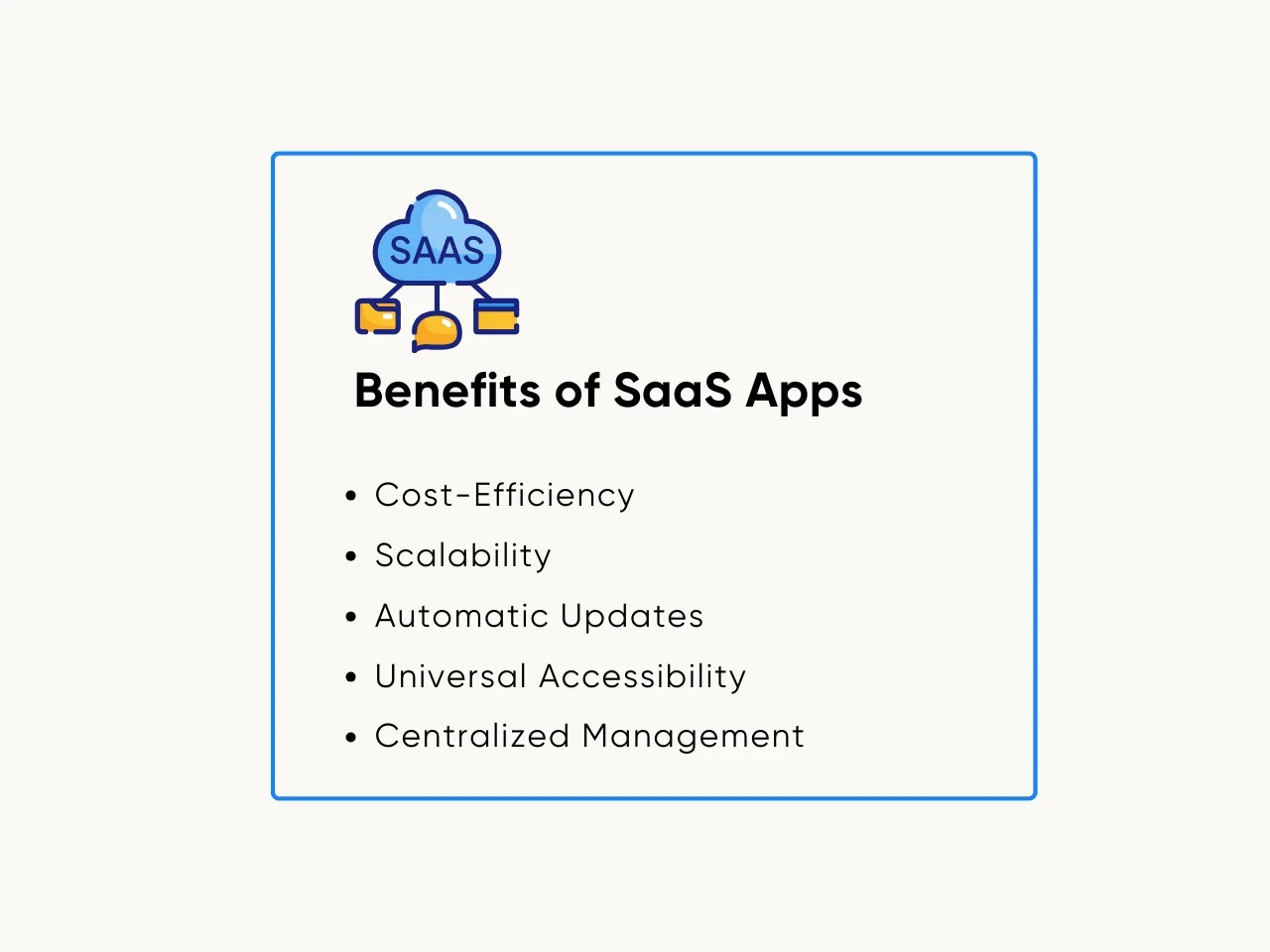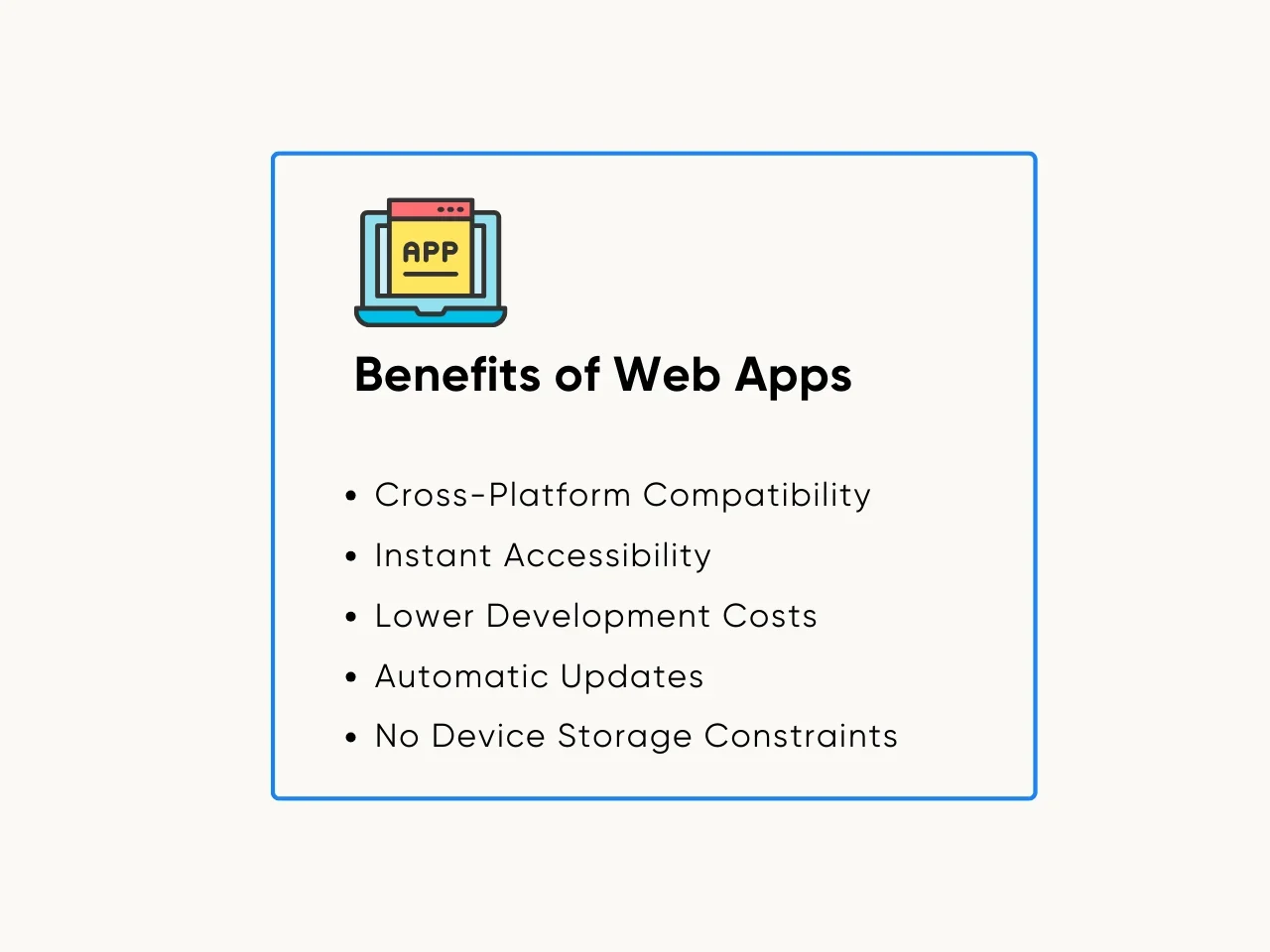Software as a Service (SaaS) has revolutionized how businesses of all sizes access and utilize software. A SaaS web application delivered through cloud services represents a dynamic solution hosted in the cloud. It offers users seamless access to software functionalities without needing local installations, transforming how businesses operate and leverage technology.
As businesses increasingly embrace the flexibility of a SaaS web application, the landscape continues to evolve, fostering innovation and efficiency.
At Aloa, we understand the transformative power of a SaaS web application in today's business environment. Our expertise lies in crafting tailored solutions, ensuring our clients harness the full potential of a SaaS web application to enhance efficiency, scalability, and user experience in their digital endeavors.
This blog will explore SaaS web apps and understand the differences between a SaaS product and regular web applications. We'll look at when and how these technologies are helpful, making it easy for you to grasp their practical benefits for your business. By the end, you'll have a clear picture of how a SaaS web application can enhance your digital strategies.
Let's dive in!
SaaS Web Application: What's the Difference?
Understanding the distinctions in a SaaS web application is vital for businesses amidst the cloud computing era and digital transformation. SaaS operates in the cloud, providing access without local installations, while web applications function directly through browsers. Recognizing these differences is essential for informed decision-making in the evolving SaaS market.
Let's explore the key differences between a SaaS and web application, understanding how they work and why it matters for businesses in the digital world.
What is a SaaS Application?
In a SaaS web application, Software as a Service (SaaS) is akin to renting software rather than purchasing and installing it on your computer. Provided by a cloud service provider, it resides entirely on the internet, allowing direct access to the application from your web browser. With SaaS software, you subscribe to it every month, enjoying the added benefit of automatic software updates.
One of the critical features of SaaS is its subscription model. Instead of a one-time purchase, you pay a recurring subscription fee. This can be more cost-effective as it often includes maintenance, updates, and support. For businesses dealing with multiple subscriptions, software license tracking solutions offer a streamlined way to track and manage licenses, ensuring compliance and cost efficiency.
Additionally, SaaS accommodates multiple users or businesses on the same application, each with its own secure space. This approach ensures data isolation and cloud security while providing a shared platform, making SaaS an efficient and collaborative solution for various users with specific needs. Whether you're a team member or a business, SaaS caters to your unique requirements through the capabilities offered by the cloud provider.
Moreover, for B2B SaaS companies, it's essential to maximize their online visibility and reach their target market effectively. Partnering with a SaaS Link Building agency plays a key role here, as it strengthens domain authority and drives qualified traffic. Also, that's where the role of SEO for B2B SaaS becomes paramount, as it helps in optimizing their web presence to attract the right audience and enhance user engagement.That's where the role of SEO for B2B SaaS becomes paramount, as it helps in optimizing their web presence to attract the right audience and enhance user engagement.
What is a Web Application?
Understanding what a SaaS web application is crucial when exploring digital tools. A web application, akin to a software program, is accessed through a web browser rather than being installed on your device. These applications span from straightforward tools like email and online forms to intricate systems like project management or collaborative platforms.
The beauty of web applications lies in their universal accessibility. Since they operate through browsers, you can use them on any devic e with an internet connection. Additionally, updates and improvements are typically managed on the server side, so users can always access the latest features without the hassle of manual installations.
In summary, a web application is an interactive online tool accessible through a web browser, providing users with flexibility, convenience, and the latest features without needing local installations. Whether for personal use or business tasks, web applications offer a seamless and adaptable experience in the interconnected world of the internet.
Core Differences Between a SaaS and Web Application
Navigating a SaaS web application involves understanding fundamental distinctions that shape its functionalities and usage, especially in the context of business applications. While both deliver software solutions, their deployment, accessibility, and business models diverge significantly. Here are the core differences between a SaaS and web application:

- Deployment Model: While SaaS operates in the public cloud, allowing online access without local installations, web applications are typically accessed through browsers, whether hosted online or locally.
- Subscription vs. Ownership: In terms of payment, SaaS operates on a subscription model with recurring payments, whereas web applications may offer one-time purchases or free access.
- Automatic Updates: SaaS ensures users have the latest features with centrally managed updates. At the same time, web applications often implement updates on the server side.
- Accessibility: SaaS prioritizes universal online accessibility with centralized and collaborative features. Web applications offer flexibility across various devices through web browsers.
- Multi-Tenancy: SaaS is designed for multi-tenancy, allowing multiple users with data isolation, while web applications typically focus on a single-user experience.
- Infrastructure costs: SaaS follows a subscription model, encompassing maintenance, updates, and support in a predictable cost structure, whereas web applications may have varied costs, including one-time purchases or free access.
- Customization: A SaaS provider often provides limited customization options to maintain consistency, whereas web applications may offer more extensive customization for individual preferences.
- Scalability: SaaS is built for scalability, accommodating growing user needs easily, whereas web applications may face challenges scaling for a more extensive user base.
- Integration Capabilities: SaaS applications usually offer seamless integrations with other SaaS tools due to their cloud-based nature. In contrast, web applications may require additional effort for integrations.
- Offline Functionality: SaaS heavily relies on an internet connection, limiting functionality offline, whereas some web applications can be designed to work offline, offering more flexibility in diverse usage scenarios.
Use Cases for SaaS Apps
SaaS apps find versatile applications across various domains, solving complex operational challenges. Here are the most common use cases of SaaS apps, showcasing their transformative impact on modern business operations:

Enterprise Resource Planning (ERP)
SaaS applications are widely utilized for Enterprise Resource Planning (ERP), enabling businesses to manage various processes like finance, human resources, and supply chain seamlessly. The scalability of SaaS accommodates the evolving needs of large enterprises, providing a centralized platform for streamlined operations.
Customer Relationship Management (CRM)
SaaS CRM solutions empower businesses to enhance customer interactions, manage sales leads, and track customer data effectively. The flexibility of SaaS allows companies to adapt their CRM systems to changing customer demands and market trends without the need for extensive reconfiguration.
Collaborative Project Management
SaaS-based project management tools facilitate team collaboration, allowing real-time updates, file sharing, and task management. The accessibility of these applications from various locations enhances team coordination, making them invaluable for businesses with remote or distributed teams.
Human Resources (HR) Management
SaaS HR management applications streamline personnel processes, from recruitment and onboarding to performance evaluations and payroll. The scalability and centralized nature of SaaS contribute to efficient HR operations, enabling businesses to focus on strategic workforce management.
E-Learning Platforms
SaaS applications play a pivotal role in e-learning by providing scalable and accessible platforms for educational content delivery. These applications allow educational institutions and businesses to manage courses, track progress, and deliver a consistent learning experience to a diverse audience.
Use Cases for Web Apps
Web applications have become indispensable tools in the digital era, driving user engagement and accessibility across a myriad of industries. Embraced for their versatility, the most common use cases of web apps illustrate their pivotal role in shaping seamless online experiences and meeting diverse user needs. Here are a few use cases of web apps:

E-Commerce Platforms
Web applications serve as the backbone for e-commerce platforms, offering users a seamless online shopping experience. These applications handle product catalogs, secure transactions, and personalized user accounts, creating a dynamic and accessible platform for businesses to showcase and sell their products.
Social Media Networks
Web applications are fundamental to social media networks, allowing users to connect, share content, and interact with each other. The responsive design of web apps ensures a consistent experience across various devices, fostering widespread accessibility for users.
Collaborative Tools
Web applications are instrumental in collaborative tools like shared document editors, project management platforms, and virtual whiteboards. These applications enable real-time collaboration among users, regardless of geographical location, promoting teamwork and efficiency.
Content Management Systems (CMS)
Web applications power content management systems, allowing individuals and businesses to create, edit, and publish digital content. These platforms provide a user-friendly interface for managing websites, blogs, and online publications, facilitating efficient content creation and publication.
Online Learning Platforms
Web applications play a crucial role in online learning, providing scalable and accessible platforms for educational content delivery. These applications facilitate the creation of courses, interactive modules, and assessment tools, offering learners a flexible and responsive environment.
Benefits of SaaS Apps
In navigating the dynamic terrain of a SaaS web application, the advantages of SaaS extend far beyond traditional software models. From streamlined cost structures and automatic updates to unparalleled scalability and universal accessibility, embracing these benefits propels businesses into a dynamic digital landscape. Here are the benefits of SaaS apps:

Cost-Efficiency
SaaS apps operate on a subscription model, fostering cost efficiency by eliminating the need for significant upfront investments. This approach not only includes the software license but also covers regular updates, maintenance, and support, allowing businesses to allocate resources more efficiently and plan budgets effectively.
Scalability
The inherent scalability of SaaS platforms empowers businesses to adapt effortlessly to changing demands. As organizations grow, SaaS apps seamlessly accommodate increased user loads, expand datasets, and incorporate additional features without causing disruptions. This scalability feature ensures that the software aligns with the evolving needs of the business, promoting long-term flexibility.
Automatic Updates
SaaS apps prioritize user convenience through automatic updates, ensuring businesses always operate with the latest features and security enhancements. By automating the update process, SaaS alleviates the burden of manual installations, enhancing the overall user experience and maintaining the system's reliability over time.
Universal Accessibility
SaaS apps excel in universal accessibility by being cloud-based, enabling users to access the software from any location with an internet connection. This flexibility not only fosters collaboration but also supports remote work, contributing to improved overall productivity and adaptability to the modern work environment.
Centralized Management
SaaS provides centralized management capabilities, allowing administrators to efficiently control user access, permissions, and data security from a single point. This centralized approach streamlines administration tasks, enhances overall system governance, and ensures a cohesive and secure user experience.
Benefits of SaaS Web Application
In a SaaS web application, understanding the profound advantages of web apps becomes crucial for businesses navigating the intricacies of software solutions. Explore the benefits of web apps, unveiling their transformative role in crafting efficient and user-centric digital experiences.

Cross-Platform Compatibility
Web apps boast cross-platform compatibility, offering users a seamless experience across devices and operating systems. This eliminates the need for platform-specific development, ensuring consistent functionality whether accessed from a desktop, laptop, tablet, or smartphone.
Instant Accessibility
Web apps provide instant accessibility by operating directly through web browsers, eliminating the need for time-consuming installations. Users can navigate to the app's URL, reducing deployment complexities and making the application readily available for immediate use.
Lower Development Costs
Web apps come with lower development costs as they often utilize a single codebase that works across multiple platforms. This not only streamlines the development process but also saves resources, making web apps a cost-effective solution for businesses seeking broad accessibility without the expenses associated with native applications.
Automatic Updates
Web apps, like SaaS solutions, benefit from automatic updates, ensuring users always have access to the latest features and security enhancements. This automation eliminates the need for users to manually update the application, promoting a hassle-free experience and maintaining optimal performance.
No Device Storage Constraints
Web apps do not consume device storage space, offering users more flexibility and avoiding storage constraints. This feature is particularly advantageous for users with devices with limited storage capacity, ensuring they can access and utilize the web app without concerns about storage limitations.
Key Takeaway
Understanding a SaaS web application is paramount for businesses in the digital era. The symbiotic relationship between these technologies empowers enterprises with versatile tools for navigating the complexities of modern technology.
By appreciating the core characteristics and potential of a SaaS web application, businesses can harness the full spectrum of benefits, fostering a dynamic and adaptive digital presence.
At Aloa, we specialize in SaaS application development, ensuring it seamlessly aligns with your business needs. Our expert development team is dedicated to crafting tailored solutions that leverage the power of these technologies to enhance efficiency, provide technical support, and contribute to your business growth.
To learn more about how Aloa can elevate your digital strategies, connect with us at [email protected] and unlock the full potential of tech-driven success.

